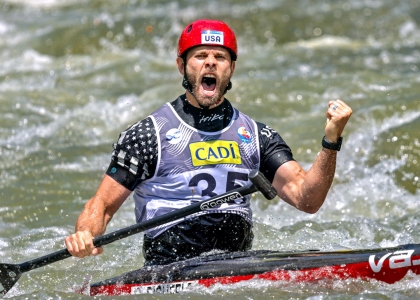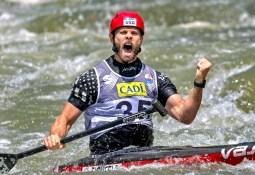Speaking in 2014, Eduardo da Costa Paes, Mayor of Rio de Janeiro, declared that when it came to building Olympic venues, “The most difficult is to create an artificial river for the slalom canoeing competition.”
Success in this area has proved that robust design and project management, technical expertise, and stakeholder input can combine to deliver a great project, a superb venue and substantial legacy outcomes.
The primary task, after winning the IOC nomination to organise the XXXI Olympic Games, was for the IOC and Brazilian project team to review past experience and establish the necessary infrastructure for every event on the Olympic programme. Site, concept design, Olympic operation, investment, maintenance and venue operation costs, and legacy, were all key criteria. Deodoro, 30km from the centre of Rio de Janeiro, hosts basketball, canoe slalom, BMX, mountain bike, equestrian, hockey, modern pentathlon, rugby and shooting events. These nine open air events required a balance of technical and environmental criteria to be met as well as achieving the legacy goal of encouraging local youth to engage in sport.
After a debate over whether the canoe slalom event should be held at the existing Foz de Iguazú venue, which had successfully hosted the 2007 ICF Slalom World Championships, Deodoro was confirmed as the chosen site. Input from the Brazilian Canoe Confederation and International Canoe Federation helped determine that a new course - close to the Deodoro and Ricardo de Albuquerque neighbourhoods - would bring maximum benefit to Rio’s sporting future.
The chosen project outline united whitewater canoeing with mountain biking to create a sporting centre that worked with the local environment. The canoe/kayak course has been created between a series of hills, splicing the whitewater course with an artificial lake to create permanent sporting and tourist heritage.
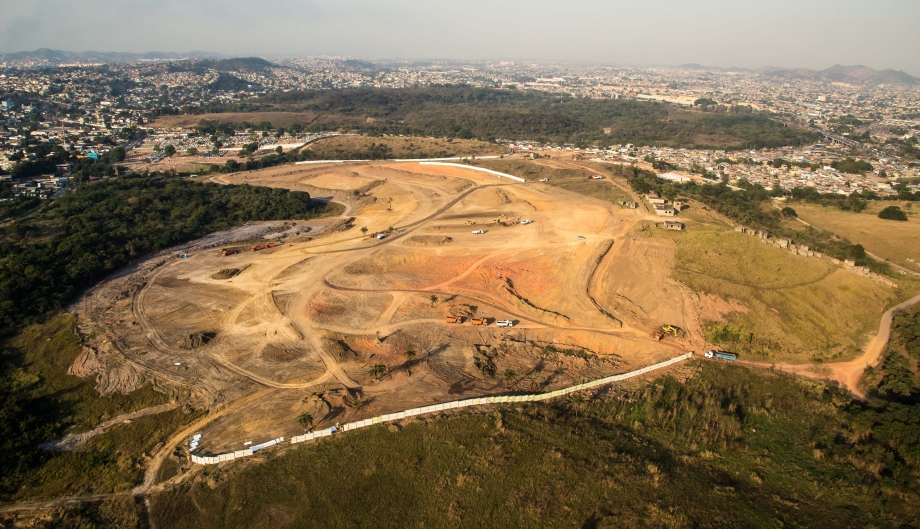 DESIGN: environmental constraints and flow requirements
DESIGN: environmental constraints and flow requirements
The design concept, created by Whitewater Parks Projects International, drew upon learning from previously constructed venues around the world. In the absence of a natural whitewater river flow as utilised for the Olympic courses at Augsburg (1972), La Seu d’Urgell (1992) and Atlanta (1996), it was necessary build a water-recycling artificial slalom course like Penrith (2000), Athens (2004), Beijing (2008), and London (2012). A pumping power station feeds an operating flow that can move from 10 to 14 cubic metres per second depending on need. Because operating consumption depends on water flow and drop, the energy required to drive the slalom has been minimised.
Over the three year construction period, the Rio organising committee has benefited from close cooperation with the International Canoe Federation which has shared a quarter-century of learning and legacy in this complex field. The resource management in both project development and construction was clearly defined as an austerity-committed budget of under 20 million dollars.
As in Beijing and London, a separate training course for beginners and to meet specific training needs has been constructed to offer legacy value. The stadium style competition course offers a permanent 280 metre course of rapids with a side slope able to host up to 8,400 spectators, whilst ensuring the retention of an amenity woodland.
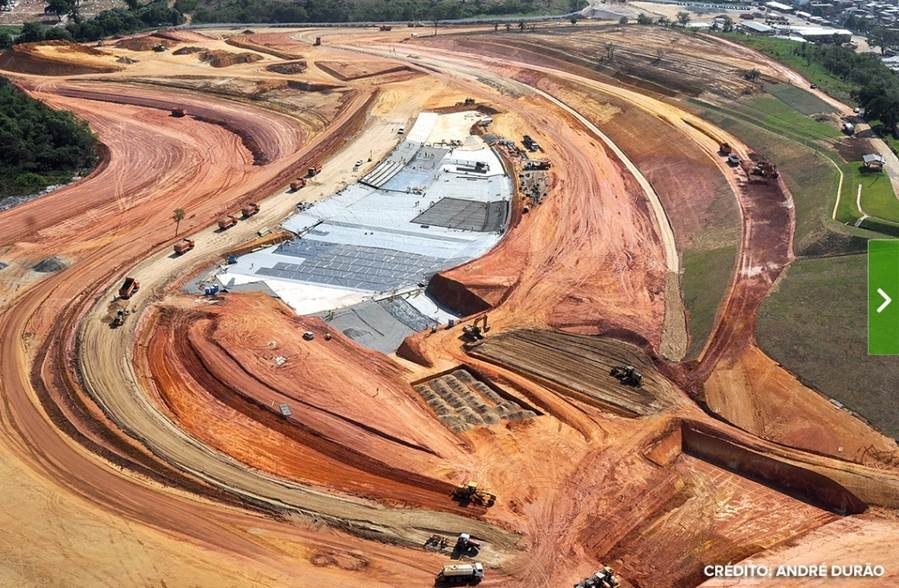
Construction and Venue Testing
The whitewater courses, constructed in reinforced concrete around a reservoir lake, draw upon rapid-block systems that use movable hydraulic propylene obstacles to alter the water configuration. The prototype design culminated in a scale model which was tested at the Prague University Engineering Hydraulic department with the participation of Professor Jaroslav Pollert and his son, Jaroslav Pollert Jr, both former canoeists.
Detailed design and construction were supported by the technical input of the Rio 2016 sport division canoe slalom manager, John McLeod. The construction phase began in July 2014 and was ready for the Olympic test event, Aquece Rio, in November 2015. This test process confirmed that the venue and its personnel were ready for Rio XXXI in the view of the participating federated teams as well as measured against objective criteria. The entire planning, design and construction phases took place with the professional supervision and encouragement of the ICF Technical Delegate, Jean-Michel Prono.
This achievement, a new Olympic sporting venue, was delivered by Rio 2016, with EOM (the municipality company) managing the project alongside OAS (the construction company and associates). The whitewater canoeing facility was in the first tranche of new Olympic venues to be transferred to the municipality. By the summer of 2016 the lake was accessible to local residents as a superlative freshwater swimming pool.
Equipped to Olympic standards and ready for August 2016, the canoe slalom venue at Deodoro has met the challenge of serving as a competition course within exacting environmental and energy constraints. Specific successes include:
- The creation of a new Olympic venue in Rio, helping to support canoe slalom, which has been part of the Games since Munich (1972) and a core sport since Barcelona (1992).
- Efficient-energy pumps, reducing the drop of the course by up to 4.5 metres.
- High water quality from a sophisticated water treatment plant.
- Close association with BMX and mountain biking, delivering synergies on the Olympic front and potential partnership in future venue operation.
- Remarkable cooperation with Brazilian Army to provide land, event security and an overall contribution to the development of sport in Brazil, and internationally.
- Final layout creating an excellent venue, due to initial functional design being confirmed in the scale hydraulic test.
- Good planning, detailed design and professional construction kept the budget under control, finished the works on time and provided a world-class layout. The combined teams from Rio 2016, EOM, the construction companies and the manufacturers that have participated in the project have honoured the challenge laid out by Major Paes; the task was difficult but despite complexities it was completed on time.
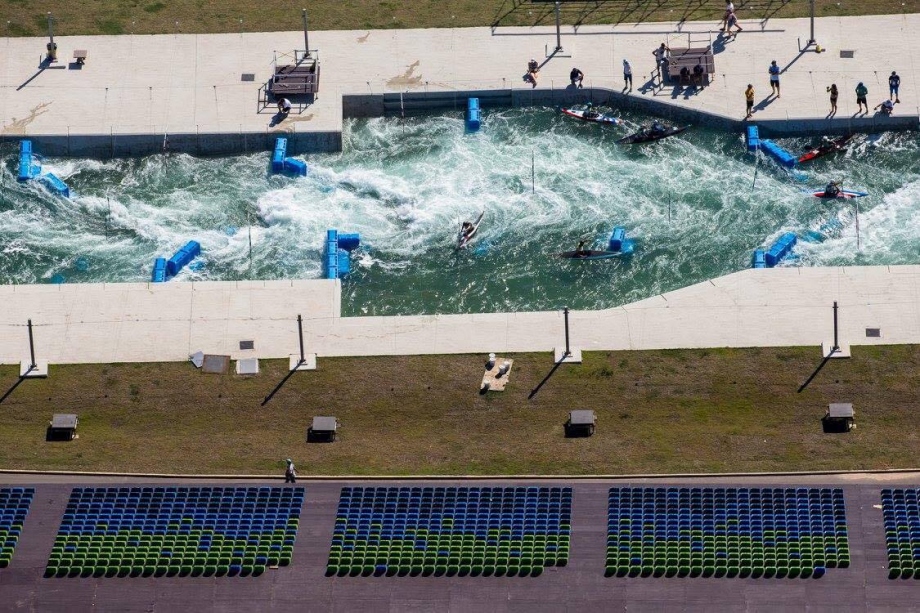
LEGACY: the true Olympic champion
Projecting the sporting investment in the canoe slalom venue after its immediate use for the Olympic competition of Rio 2016, reveals fundamental legacy built into the venue.
At the request of the Brazilian Canoe Confederation, the International Canoe Federation have nominated Deodoro, as their chosen site for the ICF Slalom World Championships 2018. This vote in favour of the venue’s sporting qualities shows both national and international federations are keen to use Deodoro, thus promoting canoeing whitewater disciplines via competition at highest level.
As a canoe sporting facility, Deodoro has potential to develop objectives in the Olympic spirit such as: canoe/kayak clubs for local residents, a centre of excellence for sport, training and competition at international level, particularly for the American continent.
Of course appropriate management will be required. To operate the venue successfully, a suitable organisation will need to commit to maintenance and assume operating costs. This management scheme could be public or private but in either case should be committed to the economic and environmental sustainability of the Park.
The Olympic Canoe Slalom venue in Deodoro has strong potential to generate economic income through combining tourism, entertainment and sport for all. The sustainable success of the venue over its lifetime will build upon its ability to integrate sport with other activities and to provide social benefits back to the community that has produced this marvellous sporting complex.
Rio Olympic Whitewtare Course
Property: Municipality of Rio de Janeiro
Founding: Sports Ministry of Brazil Federal Government
Design and construction management: Empresa Olímpica Municipal EOM
Construction company: OAS
Opening date: July 2016
Area size: hectares
Associate sport: Mountain Bike Cross MBX
| Olympic course | Training course |
Length | 250 m | 160 m |
Wide | 12-18 m | 10-18 m |
Drop | 4,50 m | 2 m |
Submersible pumps | 4 x 4,5 m3/s | 3 x 4,5 m3/s |
Electrical power | 4 x kW | 3 x kW |
Regular Flow | 12 m3/s | 10,5 m3/s |
Article by Ramon Ganyet and Jean-Michel Prono, editied by Richard Pettit

